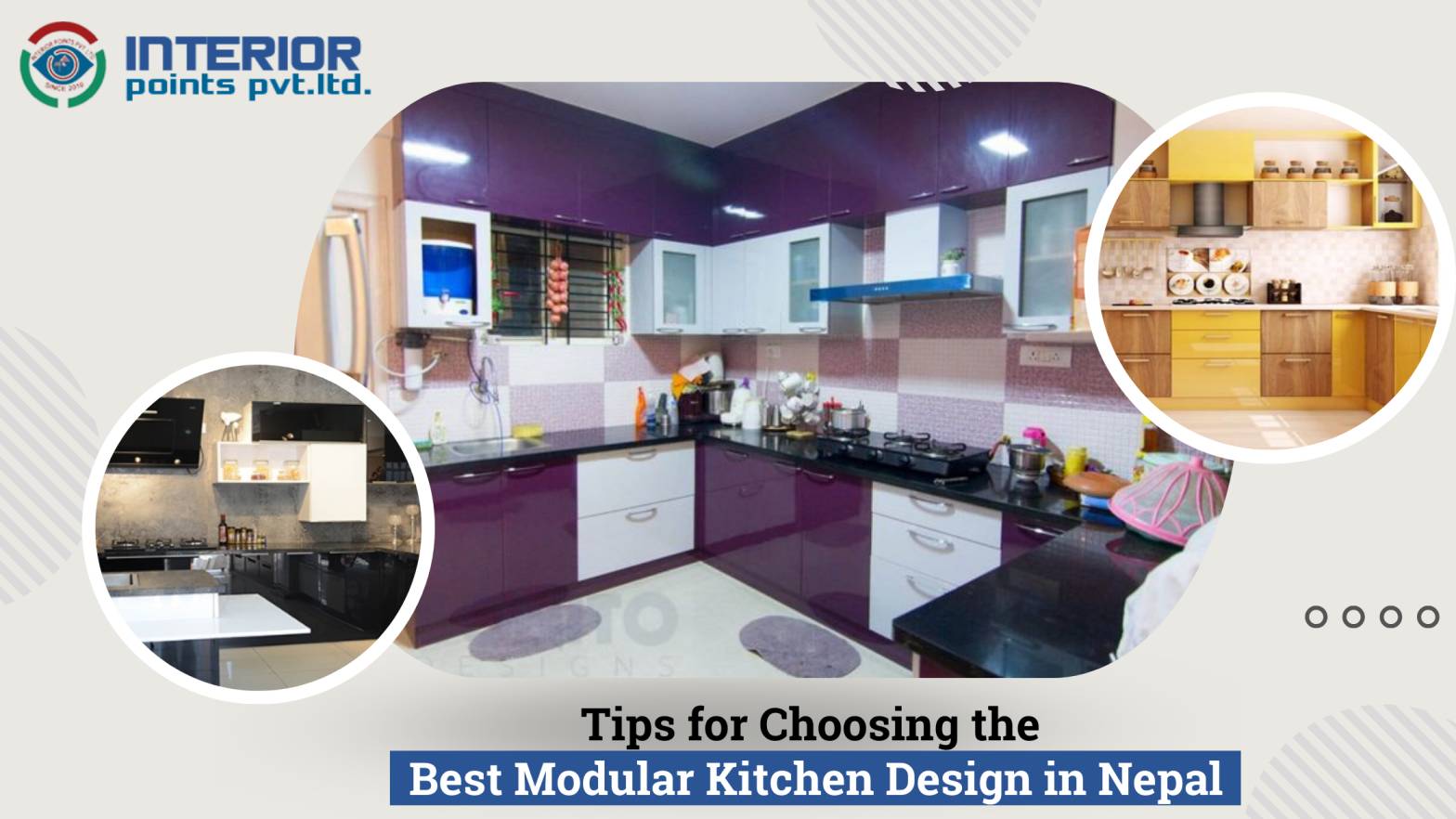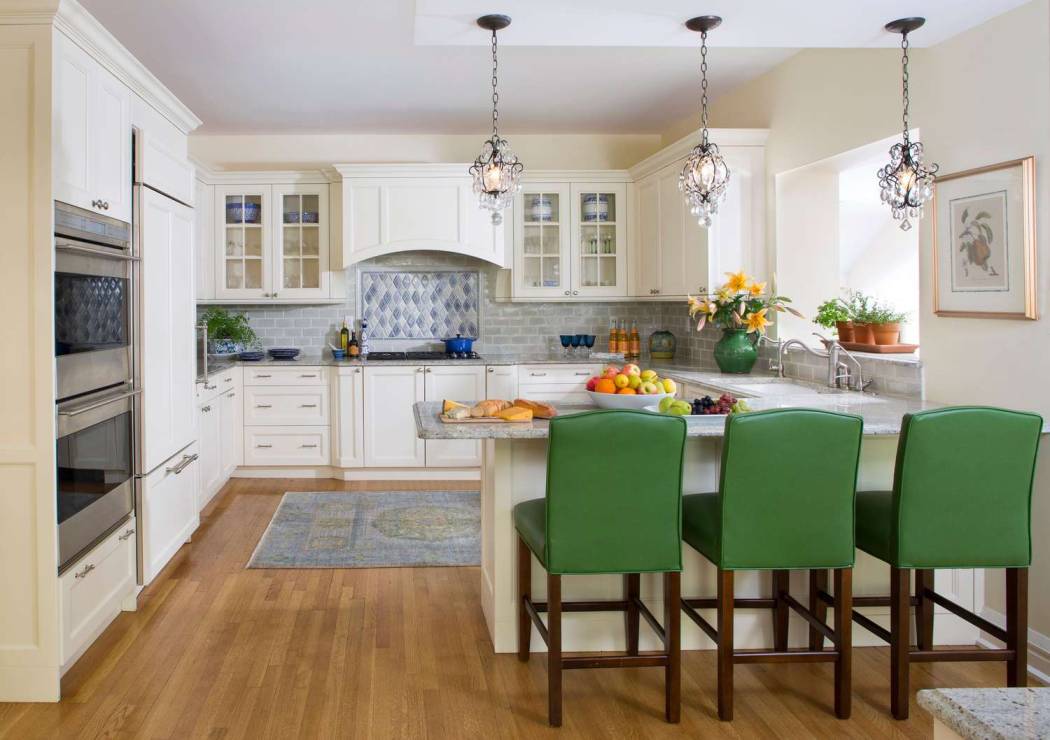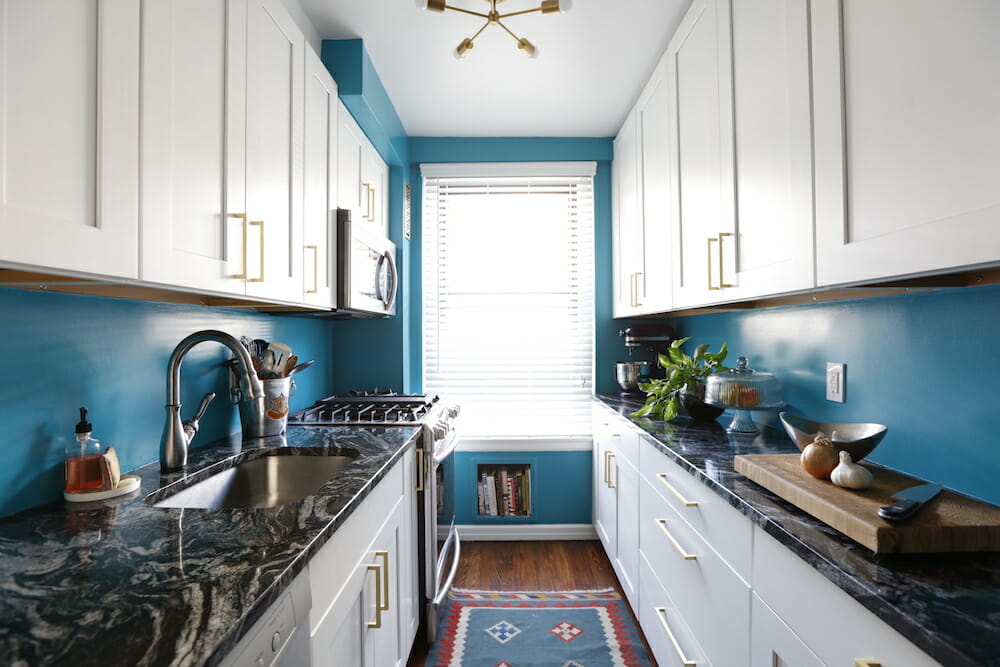

Designing a modular kitchen is an exciting yet challenging task, especially when balancing aesthetics, functionality, and budget. In Nepal, modular kitchens have gained immense popularity due to their sleek design, easy maintenance, and space efficiency. Whether you’re renovating your home or building a new one, selecting the best modular kitchen design requires careful planning. Here are some practical tips to help you make the right decision for your home in Nepal.

Before diving into modular kitchen designs, the first step is to assess the available space in your kitchen. Modular kitchens come in various layouts like L-shape, U-shape, straight line, parallel, and island kitchens. Each design works differently depending on the space. For example:
L-Shaped Kitchen: Ideal for smaller spaces.
U-Shaped Kitchen: Suited for larger spaces, offering ample storage and workspace.
Parallel Kitchen: Best for medium-sized spaces, allowing efficient movement between two counters.
Ensure the layout you choose maximizes functionality and matches the available space.
The choice of materials is essential in ensuring durability and easy maintenance. In Nepal, where climatic conditions can vary, it’s important to opt for water-resistant and termite-resistant materials. Popular materials for modular kitchens include:
Plywood: Durable and resistant to moisture, making it ideal for kitchen cabinetry.
MDF (Medium Density Fiberboard): An affordable option but not as durable as plywood.
Stainless Steel: Known for its durability and easy maintenance, although it can be costlier.
Consider materials that can withstand humidity and temperature variations common in Nepal.
A well-designed modular kitchen should prioritize storage. Use every inch of available space efficiently by incorporating smart storage solutions:
Pull-Out Drawers: Ideal for easy access to frequently used items.
Overhead Cabinets: Utilize vertical space to store less frequently used items.
Corner Units: Make use of blind corners with rotating or pull-out corner units.
Customized storage solutions allow for clutter-free cooking spaces, ensuring all your kitchen essentials are easily accessible.
The countertop is one of the most heavily used surfaces in the kitchen, so choosing the right material is crucial. In Nepal, popular choices for countertops include:
Granite: Known for its durability and resistance to heat, making it ideal for the kitchen.
Quartz: Offers a modern, sleek look and is highly durable.
Marble: Elegant but requires regular maintenance as it’s prone to staining.
Ensure that your countertop material can handle heat, is scratch-resistant, and complements the overall kitchen design.
Investing in energy-efficient appliances will not only save on electricity bills but also reduce your environmental footprint. Choose appliances with energy-efficient ratings, such as:
Induction Cooktops: Consumes less energy and cooks food faster.
LED Lighting: Energy-efficient lighting for your kitchen cabinets and workspaces.
Smart Appliances: Consider smart refrigerators, dishwashers, and ovens that enhance efficiency.
Make sure the appliances you choose fit seamlessly into the modular kitchen design.
Good ventilation is essential for maintaining a fresh and odor-free kitchen. In Nepal, where traditional cooking methods often involve frying, having a reliable exhaust system is important. Consider:
Chimneys: Install a chimney with adequate suction power to eliminate smoke and odors.
Windows and Exhaust Fans: Ensure that your kitchen has proper natural ventilation or install exhaust fans to maintain air quality.
Proper ventilation also ensures that your kitchen stays clean and free from grease buildup.
Also Read: Explore The Latest Modular Kitchen Design In Nepal


Space Optimization: Efficient use of available space, ideal for both small and large kitchens.
Customization and Flexibility: Tailor the design, layout, materials, and finishes to suit individual needs and preferences.
Ease of Installation: Prefabricated units make installation quick and hassle-free, reducing downtime.
Durability and Easy Maintenance: Built with durable, water-resistant, and termite-resistant materials that are easy to clean and maintain.
Modern and Stylish Designs: Offers sleek, contemporary looks that can elevate the aesthetic of any home.
Cost-Effective: Reduced labor and long-term maintenance costs make modular kitchens a smart financial choice.
Enhanced Functionality: Smart storage solutions, ergonomic designs, and efficient use of corners for improved functionality.
Eco-Friendly Options: Availability of sustainable, environmentally-friendly materials that reduce ecological impact.
Planning a modular kitchen involves balancing design, functionality, and budget. To ensure a successful project, it’s crucial to establish a well-thought-out budget. Below are factors to consider and practical tips to help you set a realistic budget for your modular kitchen in Nepal.
Key Factors That Impact Your Budget:
Kitchen Size: The larger the kitchen, the higher the cost due to more materials and labor.
Materials and Finishes: High-end materials like granite and custom finishes will increase the budget, whereas standard finishes are more affordable.
Design Complexity: A simple layout will cost less, while intricate designs with custom features tend to raise the overall cost.
Labor Costs in Your Area: Labor prices can vary depending on your location and the expertise of your contractors.
Tips for Setting a Realistic Modular Kitchen Budget:
Research Local Costs: Look into the average costs of similar modular kitchen projects in your area to establish a baseline.
Set a Contingency Fund: Unexpected costs can arise, so allocate extra funds to cover unforeseen expenses.
Prioritize Features: Decide on the must-have features versus those that can be added later, allowing you to focus on essentials.
Compare Quotes: Reach out to multiple contractors and suppliers to compare prices and services, ensuring you get the best value.
Designing the perfect modular kitchen in Nepal requires a blend of creativity, functionality, and smart decision-making. By assessing your kitchen space, selecting durable materials, focusing on storage, and keeping your budget in mind, you can create a kitchen that enhances your home’s value and functionality. Whether you’re building a new home or renovating an old one, these tips will help you choose the best modular kitchen design for your lifestyle.
Your Dream Space Starts Here Get Exclusive Design Straight Your Inbox!